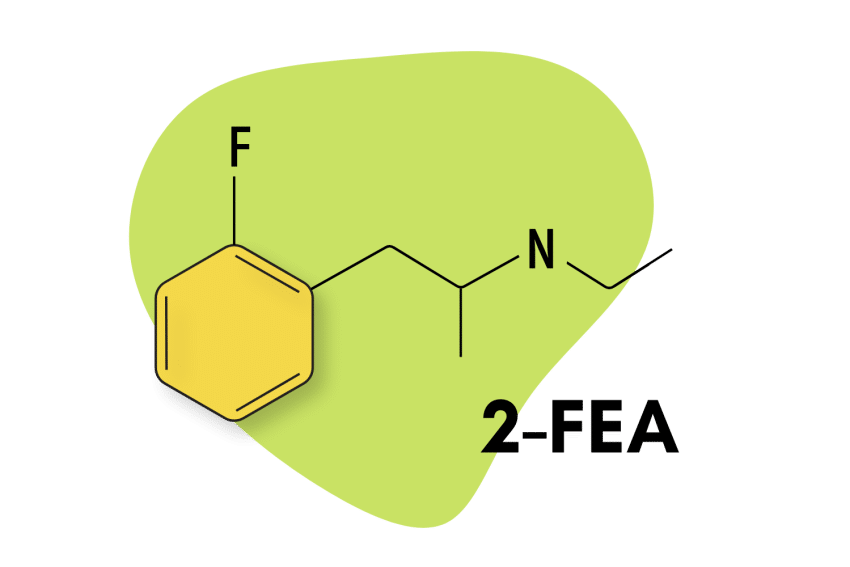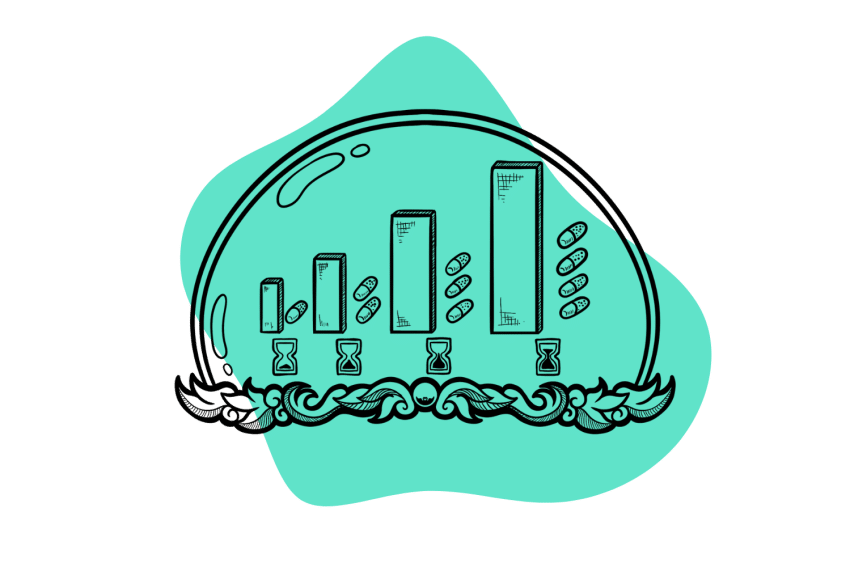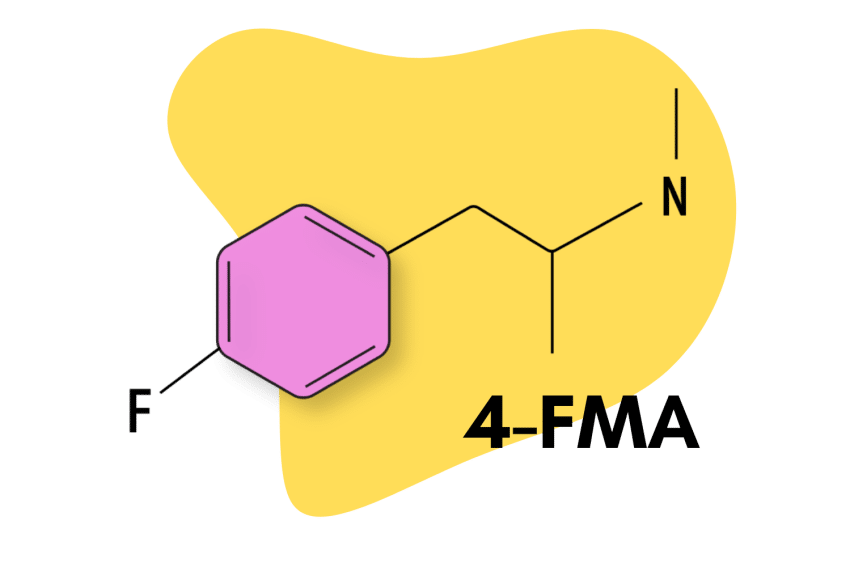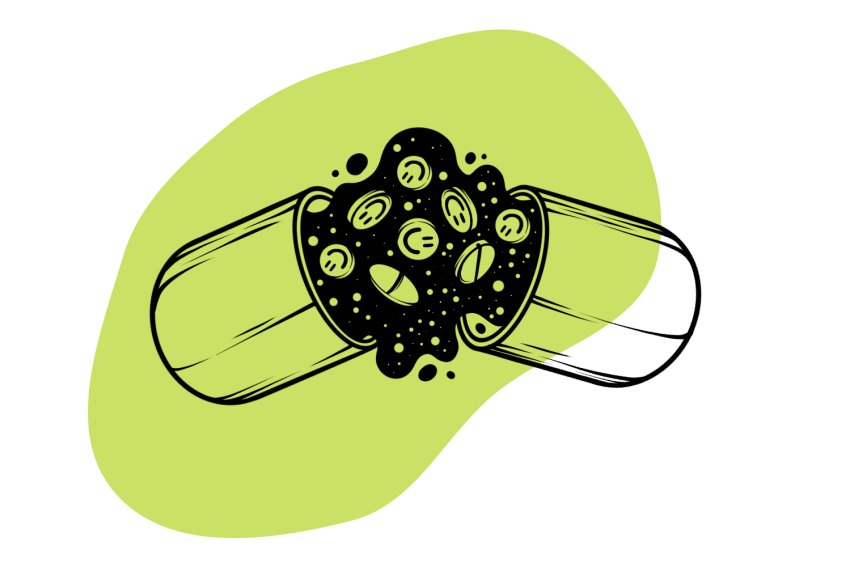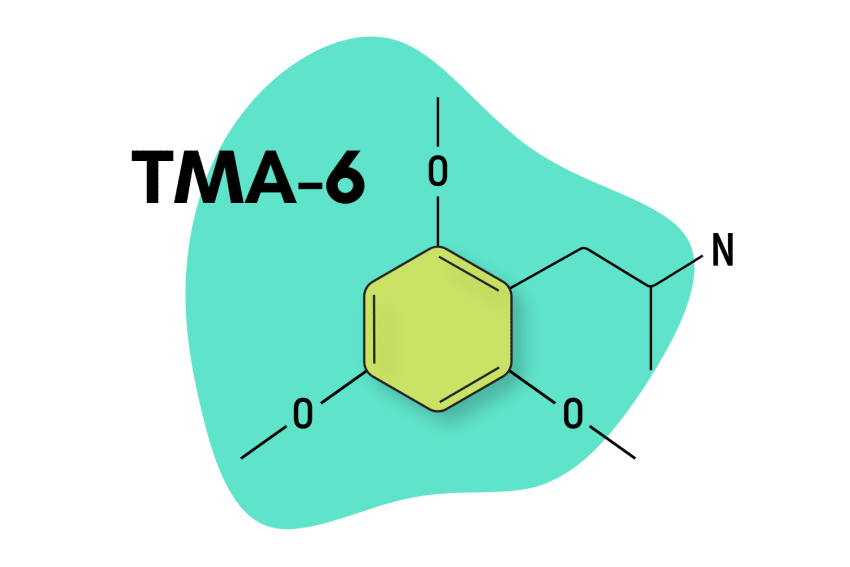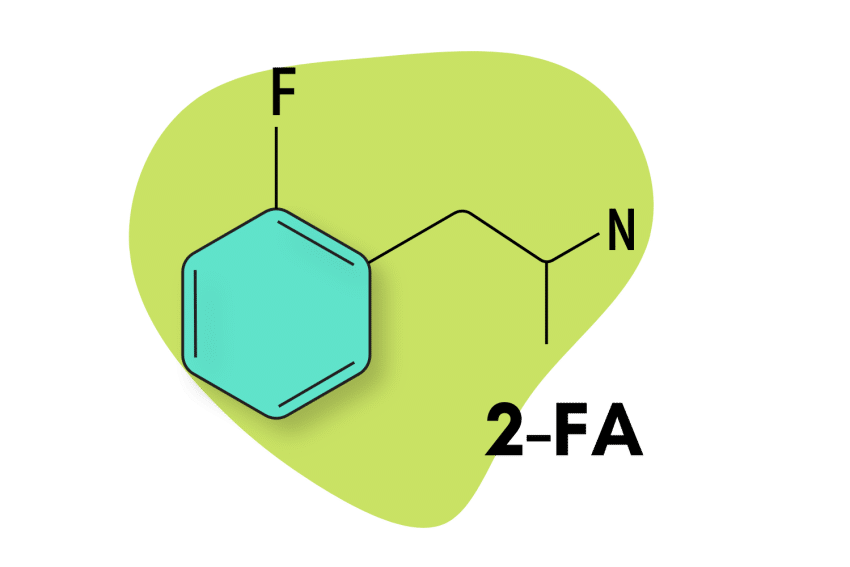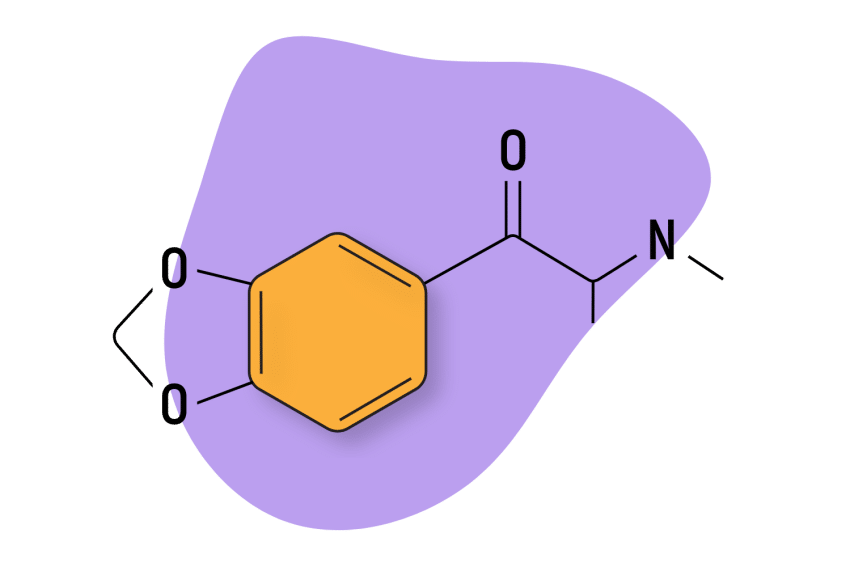3-Methylmethcathinone (3-MMC): Everything You Need to Know
3-MMC (metaphedrone) is a potent stimulant drug derived from alkaloids produced in the khat plant.
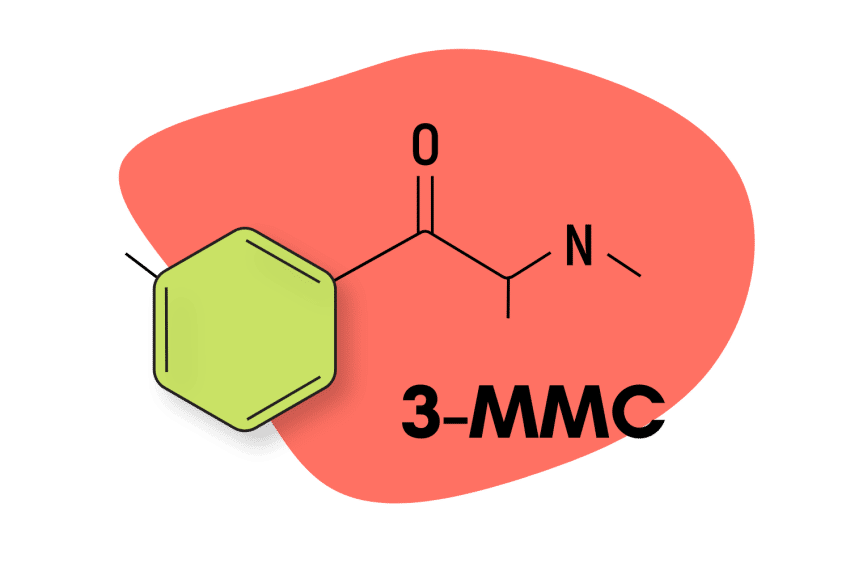
Metaphedrone — also known as 3-MMC and 3-Methylmethcathinone — is a designer drug of the substituted cathinone family (AKA “bath salts”).
It’s known for its powerful stimulant and hallucinogenic properties.
3-MMC was first detected in 2012 by public health authorities in Sweden. It’s speculated that the compound was initially synthesized as a replacement for another compound, 4-MMC, after it was outlawed.
3-MMC is now illegal in most countries as well.
The effects of 3-MMC are similar to those of MDMA (ecstasy) but with more emphasis on stimulant properties and less empathogenic effects. It appears to be roughly equal in potency to 4-MMC, with some reports saying it’s slightly more potent while others say it’s slightly less.
In any case, 4-MMC remains the more popular compound.
3-MMC Specs
| Status | Research Chemical |
| Common Dosage | 75–150 mg |
| Estimated Threshold Dose | 20 mg |
| PubChem ID | 71741532 |
| CAS# | 1246816-62-5 |
IUPAC Name: 2-(methylamino)-1-(3-methylphenyl)propan-1-one
Other Names: 3-MMC, metaphedrone
What Are the Effects of 3-MMC?
Because of their illegal status, there’s a general lack of research on the psychoactive effects of designer drugs like 3-MMC. And what studies do exist are usually based on the analysis of subjective self-assessments posted on designer drug forums, a method that lacks scientific objectivity.
So what does this situation entail for potential users?
It strongly suggests that, when researching a compound, take this information with a grain of salt. That said, the major differences between these types of compounds have largely become clear over time.
Anecdotal evidence suggests that, despite being a primarily dopaminergic drug, 3-MMC’s effects feel closer to those of serotonergic stimulants like MDMA, albeit with more stimulation.
One user suggested that 3-MMC was like mixing MDMA and cocaine. Users often cite feelings of euphoria, excitement, high energy, stimulation, happiness, awareness of the senses, and appreciation of music [5].
3-MMC Dosage
According to online drug forums, the minimum effective dose is 20 mg, while the standard dosing ranges are between 50 and 250 mg.
3-MMC Dosages Include:
| Light | 50 mg |
| Common | 50–150 mg |
| Strong | 150–250 mg |
| Heavy (Not Recommended) | >350 mg |
It’s important to remember that these figures have little scientific backing and, more importantly, that everyone’s different when it comes to dosage. The myriad of factors such as body weight, metabolism, potency, and purity make exact determinations almost impossible, so, in the end, proper dosing comes down to making common-sense decisions and implementing harm reduction tactics.
When it comes to 3-MMC, the dose will also depend on the route of administration chosen. Also, users should always go easy when trying out a new form of administration.
Duration of Effects
After oral or intravenous injection, the peak plasma concentration of 3-MMC occurs within five to 10 minutes.
Oral absorption, at 7%, was quite low and may explain why snorting is a preferred method of consumption [2].
According to subjective self-assessments found online, the duration of effects is approximately four hours, with an additional three hours of “after effects.”
How Does 3-MMC Work?
Psychoactive stimulants like 3-MMC work through three basic mechanisms:
- Some block the reuptake of neurotransmitters
- Some block the clearance of neurotransmitters
- Some reverse the polarity of neurotransmitter transporters
In the case of 3-MMC, research suggests that reuptake inhibition of dopamine and norepinephrine transporters is the primary mechanism of action.
This means that, in chemical terms, 3-MMC is primarily dopaminergic [3]. This is unusual for a 4-MMC analog, as research has shown that most of these compounds are serotonergic.
Although the three mechanisms all lead to the same overall effect — an increased level of active neurotransmitters within the brain — it’s still worthwhile to have a general understanding of the underlying chemical process behind each one.
During reuptake, a transporter protein will transfer excess neurotransmitter molecules out of the synaptic cleft, the space between neurons, and typically back into the neuron that released them. By inhibiting the transporter protein, reuptake inhibitors allow for more neurotransmitter molecules to be present in the synaptic cleft, leading to increased pharmacological efficacy for said transmitters.
With the primary mechanism now clear, it’s also important to understand that, inside the body, the realities of stimulant pharmacology are far more complex. In-depth differences between the various drugs can be significant, and factors like secondary mechanisms and receptor affinities complicate the matter even further.
3-MMC, for example, is also a substrate-type monoamine releaser, meaning it evokes the release of norepinephrine and dopamine for the presynaptic neuron, as well as having receptor affinity for serotonin 5-HT1A, 5-HT2A, and low micromolar affinity at α1A and α2A adrenergic receptors [3].
The presence of secondary properties alters the effect profile of psychoactive compounds. Researchers want to understand how all the pathways present in a compound interact together to produce the end result.
3-MMC Pharmacokinetics
The pharmacokinetics of 3-MMC reveal it’s a drug with a fast onset of action, relatively short-lasting effects, and low oral absorption. The combination of low oral absorption and short-lasting effects often leads to repeated administration in an effort to prolong the effects.
Research shows that, due to their fast-acting nature, synthetic cathinone users often experiment with multiple routes of administration to achieve both rapid and long-lasting effects [2]. For 3-MMC, the preferred routes of administration are snorting, oral capsules, or powder wrapped in cigarette paper (referred to as “bombing”).
Inhalation and intravenous injection are also used, though less frequently [4].
Metabolism
At the moment, more research is needed to fully understand the metabolic pathway of 3-MMC, but there is some data.
A preliminary study revealed 3-methylephedrine and 3-methylnorephedrine as metabolites and pointed to β-keto-reduction followed by N-demethylation as a likely metabolic process [1].
In another study, after a single intravenous dose of 0.3 mg, almost none of the drug was detected in plasma after four hours.
The elimination half-life of 3-MMC is short, at roughly 0.83 hours [2].
Harm Reduction: 3-MMC
Unlike other potent psychoactive compounds like benzodiazepines or antidepressants, psychoactive amphetamines like 3-MMC have no recognized medical uses and are thus almost exclusively used in illegal recreational contexts.
This means that it’s even more important to know and use harm reduction strategies as acute intoxication and multidrug abuse become more common in these situations.
The three most effective factors to control in terms of harm reduction are potency, dosage, and polydrug abuse.
Users must exercise extra caution when taking potent amphetamines, such as those in the synthetic cathinone class like 3-MMC. Potent compounds have a lower margin of error when it comes to crossing over from the “large but still relatively safe” range and into the danger zone.
When using these compounds, start with a minimum dose and work your way up slowly.
Only highly experienced users should consider taking their intended dose right away, and even then, there’s a considerable danger: the potency levels of unregulated drugs vary.
It’s also crucial for users to avoid using more than one type of psychoactive drug at a time. In this case, the scientific literature is crystal clear: almost all fatalities related to amphetamine use involve the presence of other drugs or more than one type of amphetamine. For a variety of reasons, mixing potent pharmacological compounds, be they illegal or not, will always increase risk levels.
When it comes to amphetamine use, staying hydrated is key. Be on the lookout for symptoms of hyperthermia (abnormally high body temperature) and elevated heart rate.
Is 3-MMC Safe? Risks & Side Effects
The toxicology of 3-MMC reveals that its risk profile is similar to that of its analog, 4-MMC.
As usual, instances of fatal intoxication have been recorded, but with the presence of other compounds, which makes the cause of death hard to determine.
A 2019 study puts the number of incidents at 13, all occurring in Europe [2]. Only two of these deaths have been attributed to 3-MMC alone.
Because the sample size is so small (n=2), it’s impossible to draw meaningful conclusions about lethality related to 3-MMC concentrations. In general, it seems lethality is mostly influenced by behavioral factors like polydrug abuse and repeated use rather than direct toxicity to the drug.
In fact, when it comes to synthetic cathinone, the literature investigating their toxic effects is quite scant. It’s expected that some of the mechanisms are similar to those of other amphetamines, considering the similar structures and mechanisms of action.
Side Effects of 3-MMC
Information pulled from toxicology reports, statements by intoxicated hospital admissions, as well as online questionnaires and drug forums, indicates the following adverse effects as a result of 3-MMC use:
- Agitation
- Aggression
- Fatigue
- Reduced levels of consciousness
- Shortness of breath
- Stuttering
- Teeth grinding
- Verbosity
Rarer side effects include:
- Anxiety
- Depression
- Difficulties in concentration
- Dilated pupils
- Disorientation
- Fear
- Hallucinations
- Hypertension
- Hyperthermia
- Hyponatremia diaphoresis
- Nystagmus
- Rhabdomyolysis
- Seizures
- Slurred Speech
- Tingling in the arms and legs
- Unsteady gait
Though it doesn’t appear much in the literature, there have also been a number of incidents where synthetic cathinone use has been linked to suicide.
Seizures also appear to be a major cause for concern when dealing with 3-MMC.
The general impression is that 3-MMC has a similar toxicology profile to MDMA, as many of its adverse effects — such as acute renal failure, disseminated intravascular coagulation, multiple organ failure, and acidosis — also appear in the studies regarding 3-MMC [6].
Withdrawal & Dependence
As is the norm with psychoactive amphetamines, the continued use of 3-MMC has been linked with psychological dependence and the formation of dangerous recreational habits. The formation of physical dependence, as well as the accompanying withdrawal effects, has also been recorded — although it’s rare and usually the result of heavy use.
Tolerance to the effects of psychoactive amphetamines tends to develop after prolonged and/or repeated use. The formation of dependence by dopaminergic stimulants is somewhat controversial, but the need for dose increases is widely recognized in the literature. However, this effect does not seem to be long-lasting. Following discontinuation, it takes about three to seven days for the tolerance to be reduced to half and about one to two weeks to be back at baseline.
Withdrawal symptoms are not unheard of in the context of psychoactive stimulants, but they are quite rare.
A report by the World Health Organization (WHO) on 3-MMC only mentions a couple of cases of withdrawal-induced hospitalizations, and most involve highly dangerous habits: one patient reported he’d been using the compound daily for over a year, while another said he administered 3-MMC, along with other compounds, through injections.
3-MMC Drug Interactions
There’s a lot we don’t know about 3-MMC, including how it’s likely to interact with other substances (both illicit and prescribed).
As a powerful stimulant, 3-MMC likely carries the highest level of risk compared with other stimulant drugs, alcohol, or substances that slow or inhibit the body’s ability to metabolize via the liver.
There are several drug combinations, in particular, to watch out for when using 3-MMC:
1. Alcohol & Other Central Nervous System Depressants
Combining alcohol with stimulants increases the risk of accidental over-intoxication.
Stimulants mask the effects of depressants, and once the stimulant wears off, the depressant effects are left unopposed. This can result in blackouts and severe respiratory depression, especially if multiple depressants are present.
Other central nervous system depressants include GHB, benzodiazepines, and phenibut.
2. Other Amphetamines
Drugs like MDMA and other psychoactive amphetamines have what is known as an “agonistic effect” when used with 3-MMC.
This means that both drugs work towards the same ends, often making the compounded result exponentially stronger and thus more dangerous.
3. Stimulants
Stimulants like cocaine or caffeine have an agonistic effect (make stronger) on some of the most dangerous side effects of 3-MMC, like increased heart rate and blood pressure.
Mixing 3-MMC with stimulants carries a high risk of overdose or significant cardiovascular side effects.
4. Opiate Painkillers
Opiates, such as tramadol, reduce the seizure threshold. 3-MMC is known to cause seizures.
Therefore. It’s logical to assume that a combination of 3-MMC and opiates carries a much higher risk of causing seizures than 3-MMC alone.
5. MAO Inhibitors
MAO (monoamine oxidase) inhibitors are a class of antidepressants that, when used in combination with psychedelic amphetamines like 3-MMC or MDMA, may result in a potentially fatal condition known as “serotonin syndrome.”
3-MMC increases serotonergic activity through a separate mechanism from MAOs. When combined, the effects may be much stronger than expected.
6. CYP-Inhibitors
Research has shown that drugs with the capability to inhibit the CYP enzyme system may affect the metabolic clearance of 3-MMC, making the drug more long-lasting and increasing the risk of adverse effects.
Contraindications of 3-MMC (When to Avoid 3-MMC)
A contraindication describes a situation where using a particular drug delivers a notably higher risk to the user.
Contraindications for amphetamines such as 3-MMC (and others) include:
- History of depression, bipolar disorder, motor or verbal tics, or Tourette’s syndrome
- Tendency to become agitated
- Cardiovascular disease or arteriosclerosis, a thickening or hardening of artery walls
- Glaucoma
- Moderate to severe hypertension
- An overactive thyroid, known as hyperthyroidism
- Sensitivity to amphetamines or their derivatives
- Thinking about or attempting suicide
- Use of monoamine oxidase inhibitors (MAOIs) within the past 2 weeks, including moclobemide and toloxatone
Related Amphetamines
3-MMC is most structurally similar to 4-MMC or 2-MMC.
Its effects overlap with serotonergic amphetamines such as 2-FEA or MDMA.
There’s also some similarity in effects with other non-cathinone amphetamines, such as methamphetamine, amphetamine, MDA, 3-FA, 2-FA, and lisdexamfetamine.
Within the rest of the synthetic cathinone class, the most popular members are MDPV and alpha-PVP.
3-MMC FAQs
1. How Popular is 3-MMC?
In a 2013 Slovenian study in which 25 individuals were interviewed on their experiences regarding NPS use, 3-MMC was the most common drug of choice [6].
In the US, official reports suggest drugs like MDPV and alpha-PVP are more popular.
Within various designer drug forums, 4-MMC appears to be the more popular member of the X-MMC group.
2. What Does 3-MMC Look Like?
In its pure form, 3-MMC hydrochloride is usually odorless and white, like many other ring-substituted synthetic cathinones. Synthesized 3-MMC hydrochloride has been described
as a white powder, a white solid, and a gray solid, often in crystalline form.
References
- Frison, G., Frasson, S., Zancanaro, F., Tedeschi, G., & Zamengo, L. (2016). Detection of 3-methylmethcathinone and its metabolites 3-methylephedrine and 3-methylnorephedrine in pubic hair samples by liquid chromatography–high resolution/high accuracy Orbitrap mass spectrometry. Forensic science international, 265, 131-137.
- Ferreira, B., da Silva, D. D., Carvalho, F., de Lourdes Bastos, M., & Carmo, H. (2019). The novel psychoactive substance 3-methylmethcathinone (3-MMC or metaphedrone): A review. Forensic science international, 295, 54-63.
- Luethi, D., Kolaczynska, K. E., Docci, L., Krähenbühl, S., Hoener, M. C., & Liechti, M. E. (2018). Pharmacological profile of mephedrone analogs and related new psychoactive substances. Neuropharmacology, 134, 4-12.
- Zawilska, J. B. (2014). Mephedrone and other cathinones. Current opinion in psychiatry, 27(4), 256-262.
- Adamowicz, P., Zuba, D., & Byrska, B. (2014). Fatal intoxication with 3-methyl-N-methylcathinone (3-MMC) and 5-(2-aminopropyl) benzofuran (5-APB). Forensic Science International, 245, 126-132.
- Sande, M. (2016). Characteristics of the use of 3-MMC and other new psychoactive drugs in Slovenia, and the perceived problems experienced by users. International Journal of Drug Policy, 27, 65-73.

